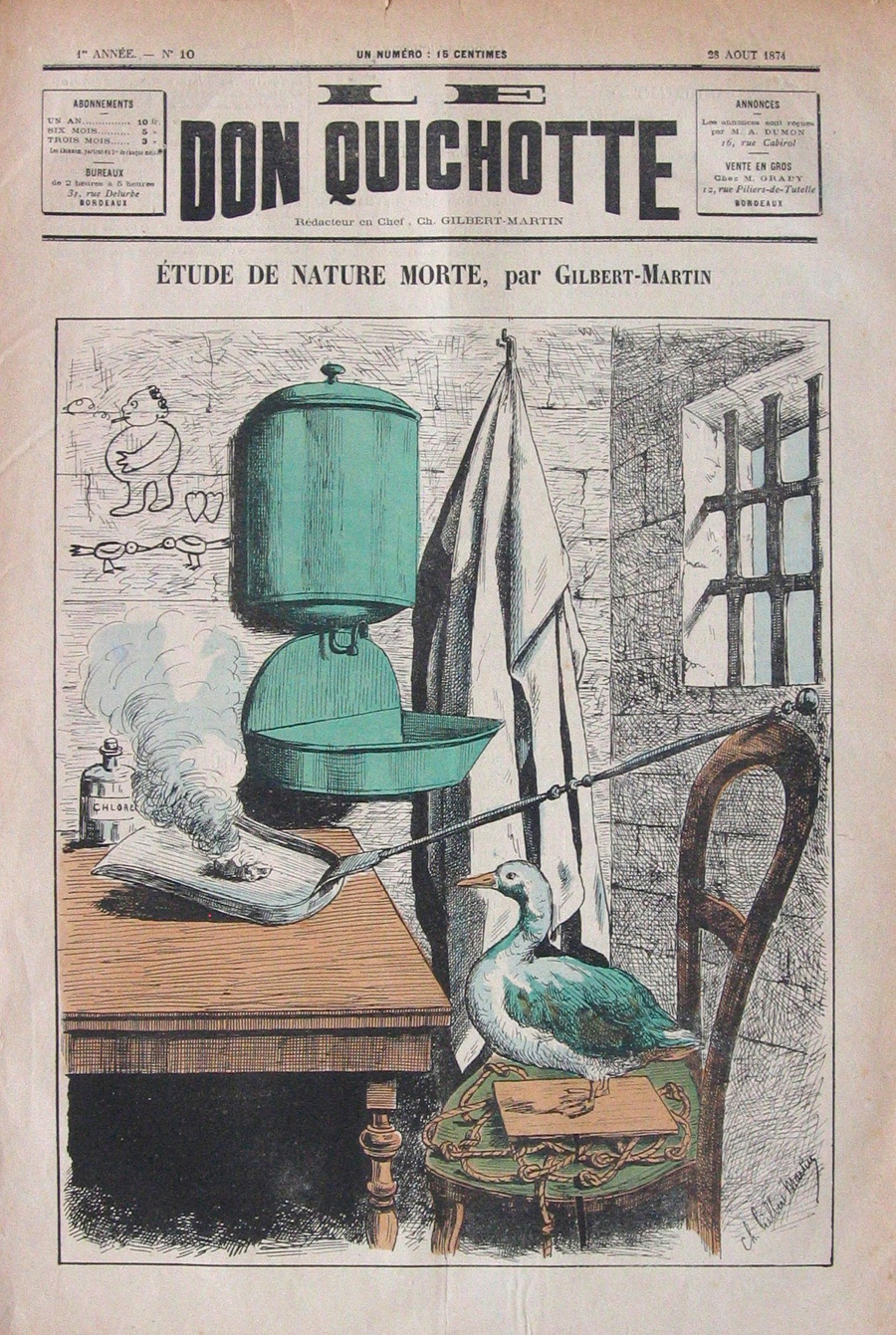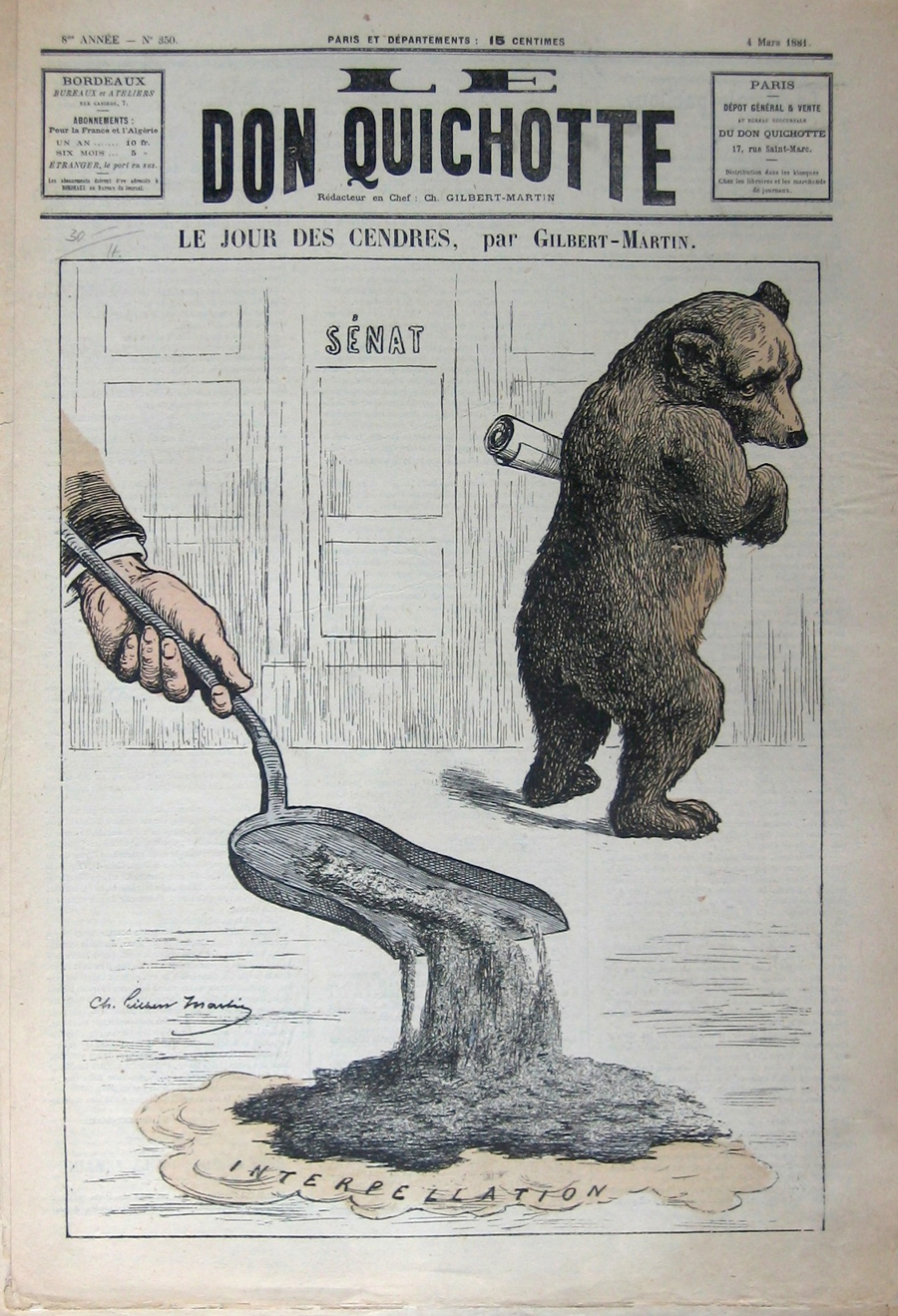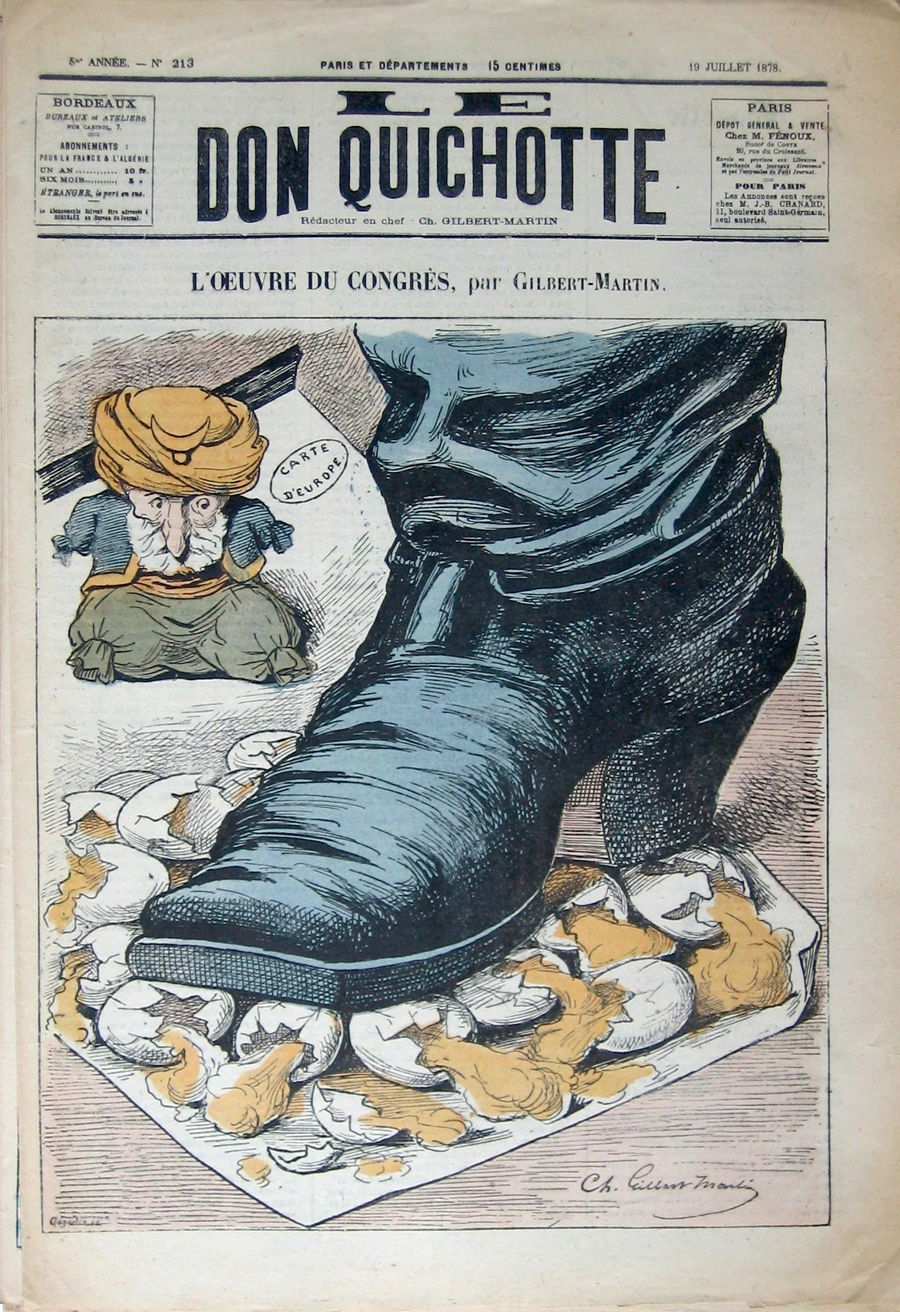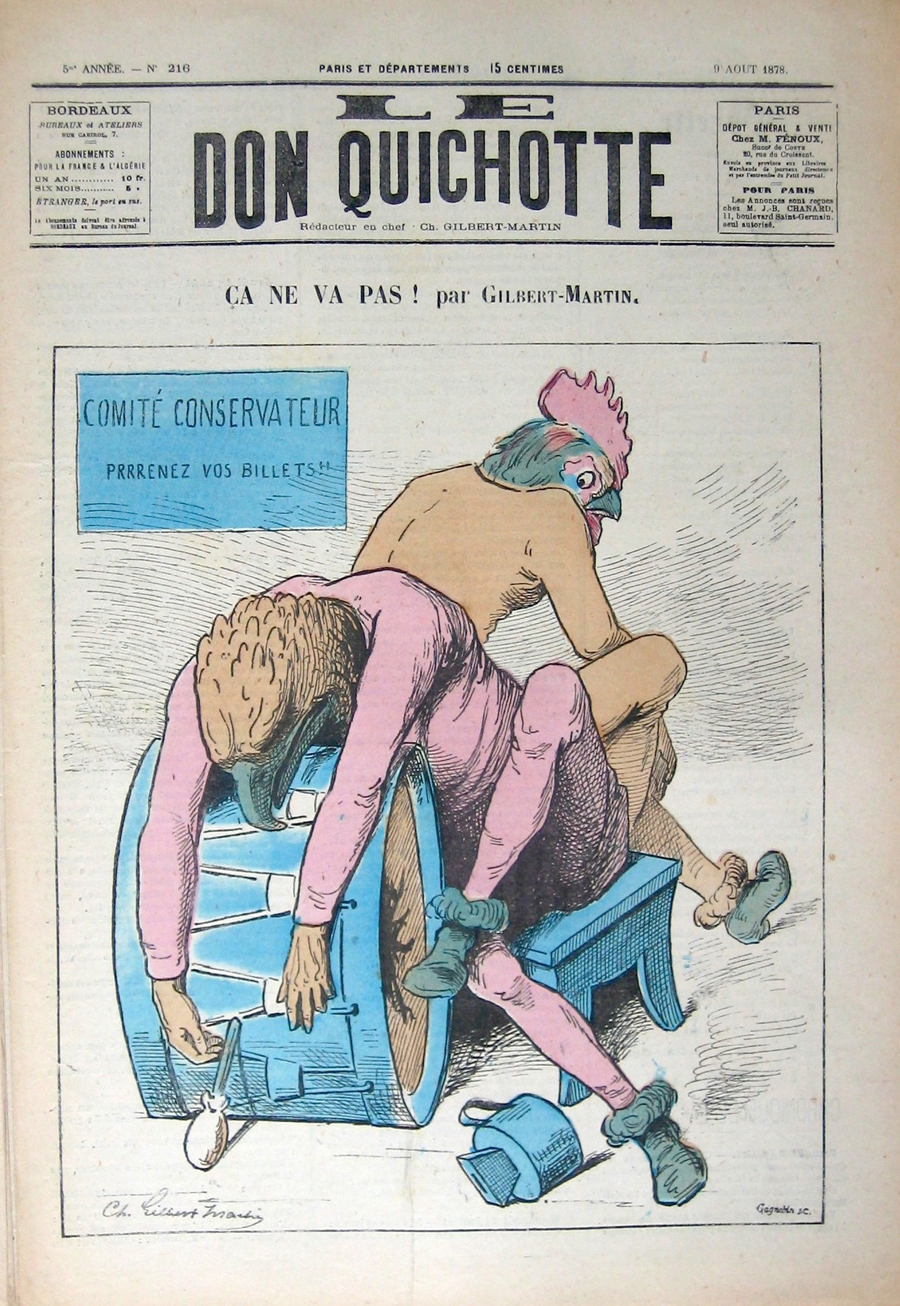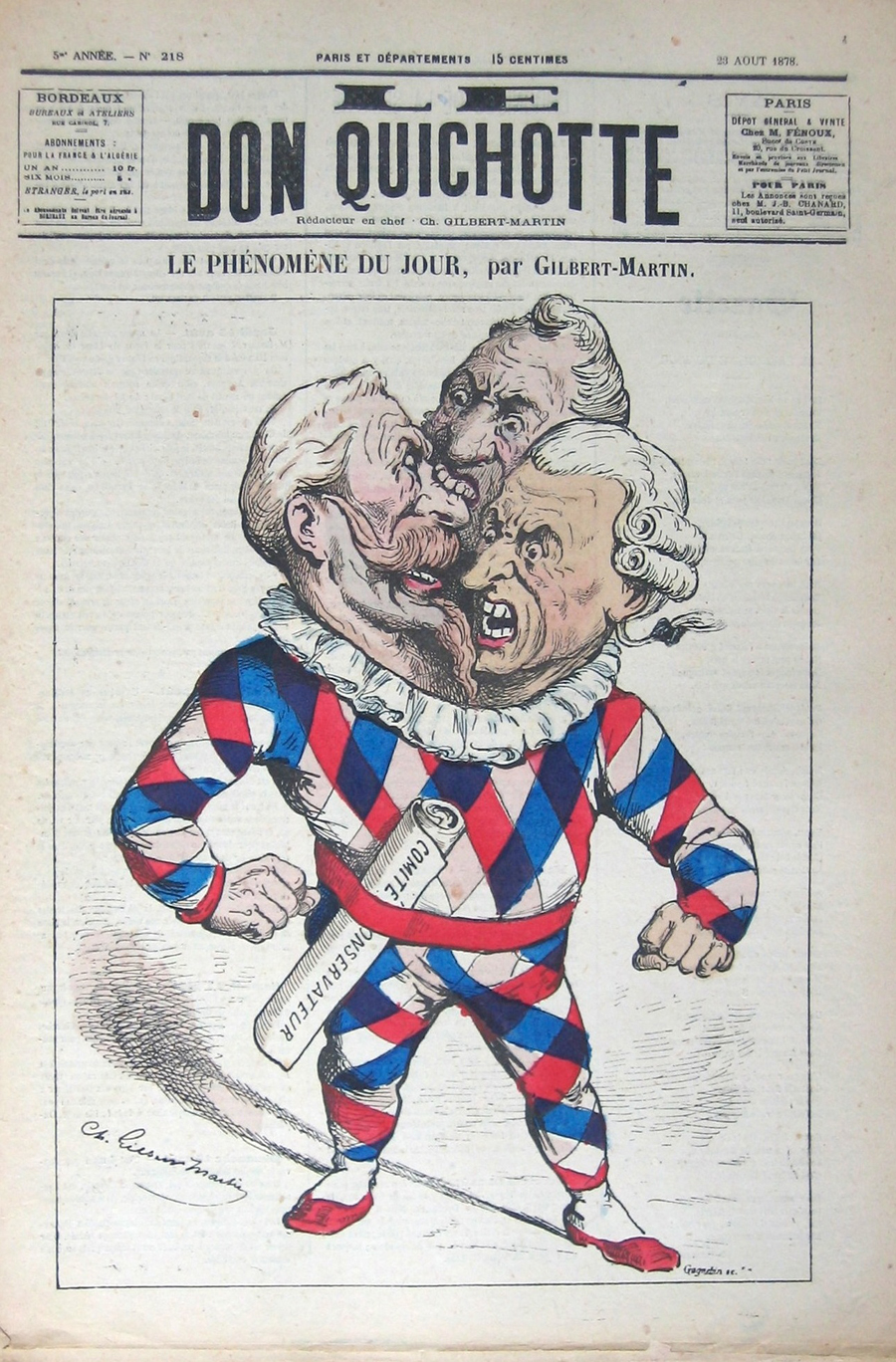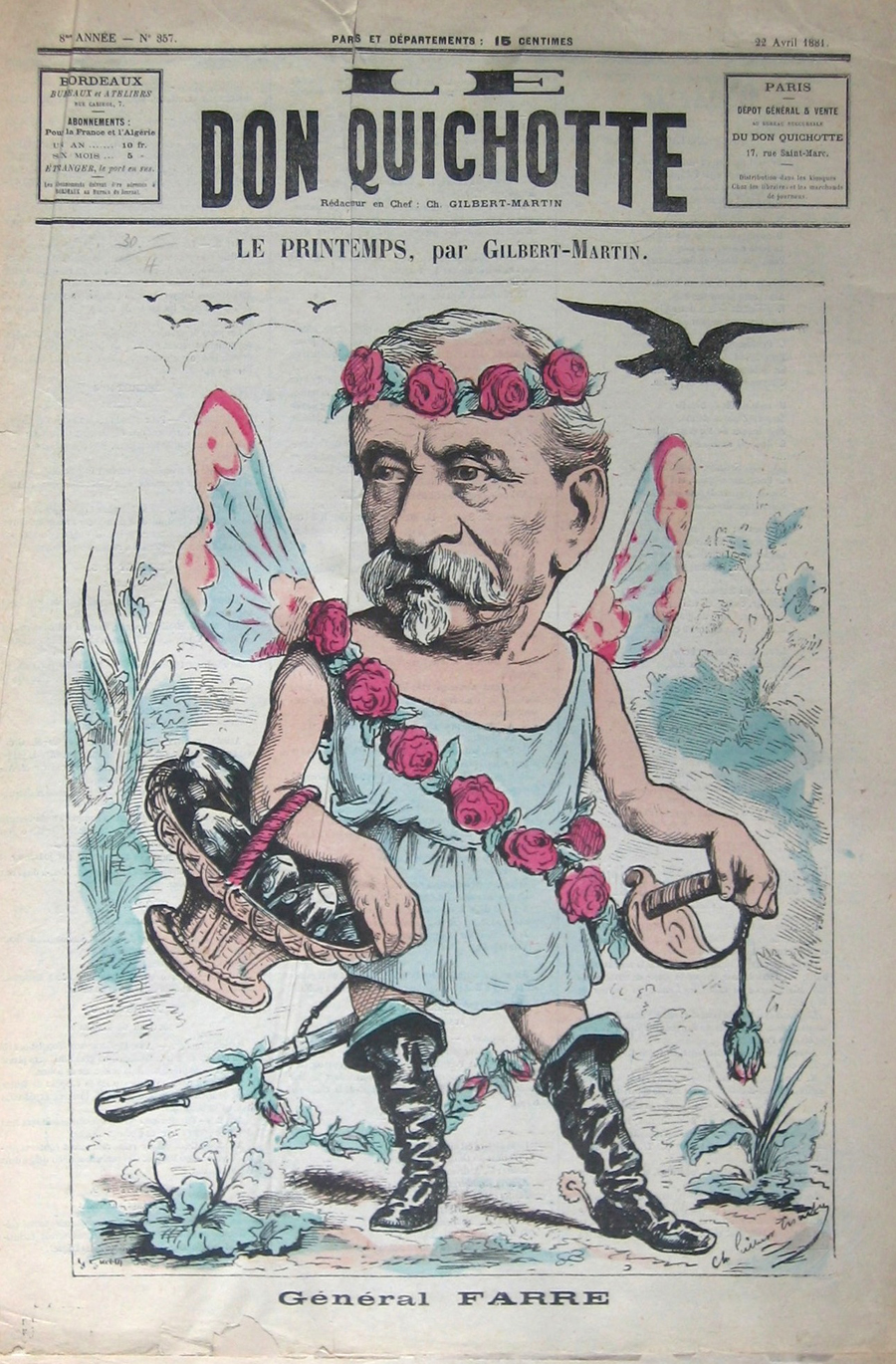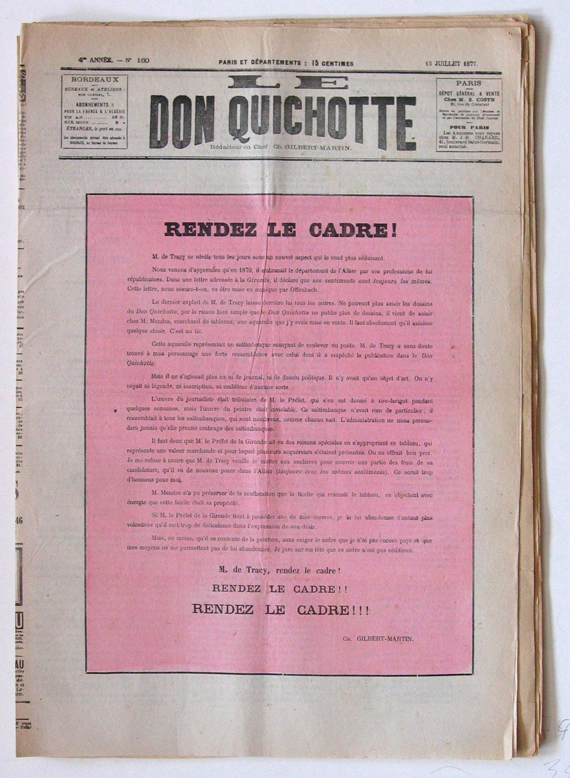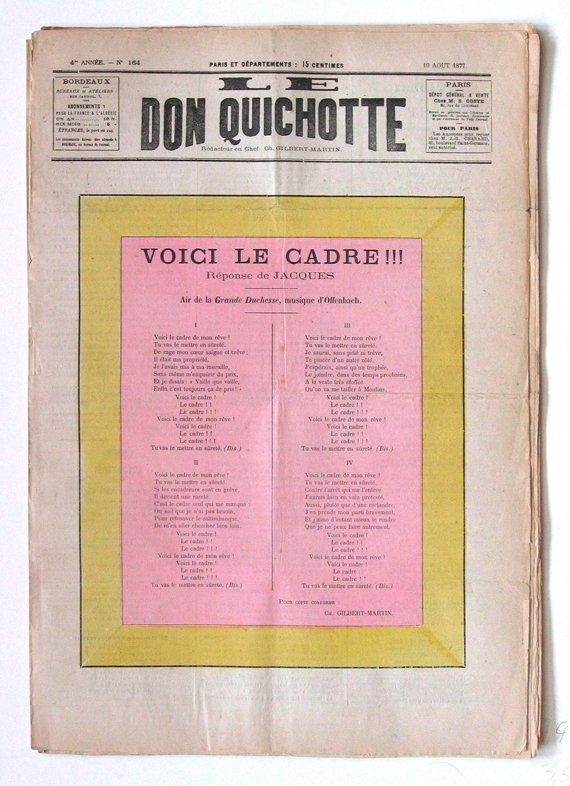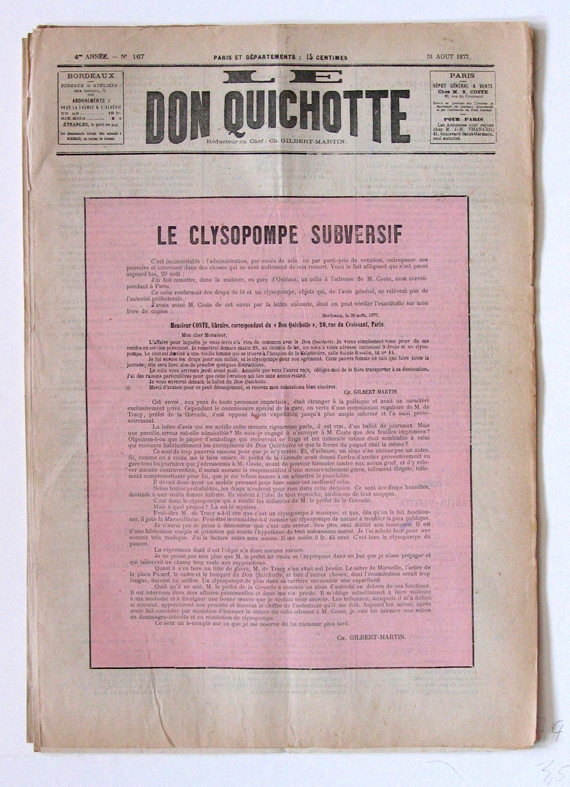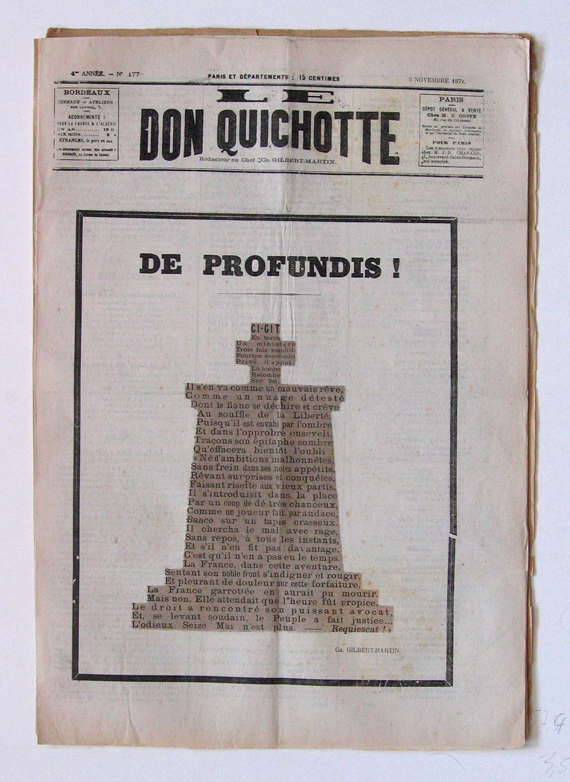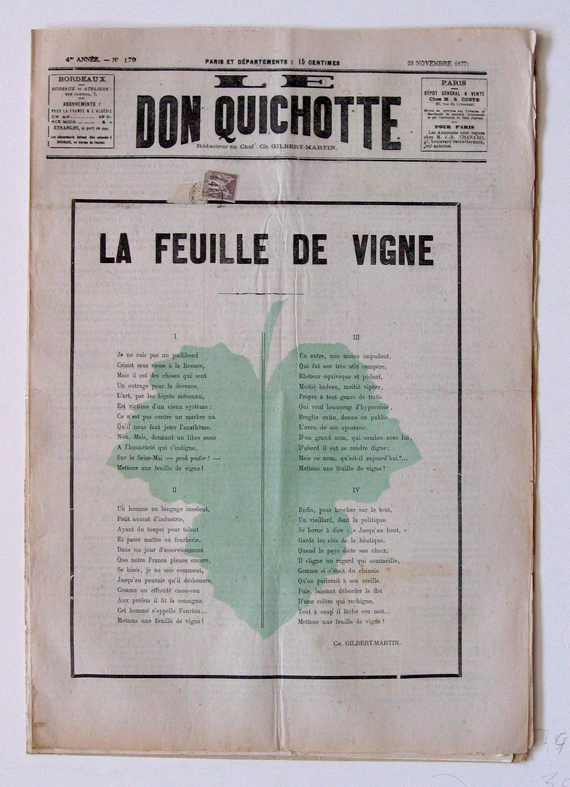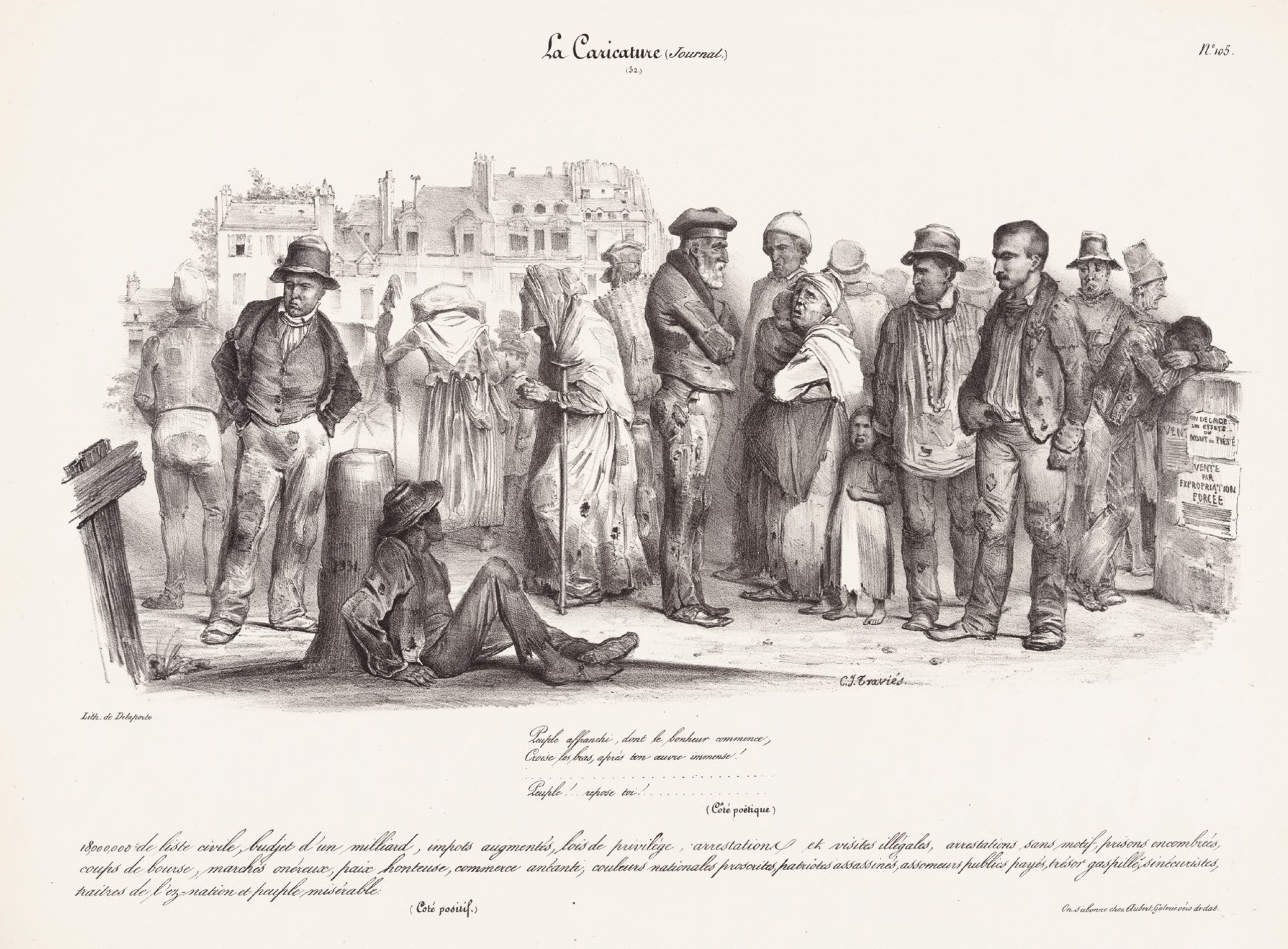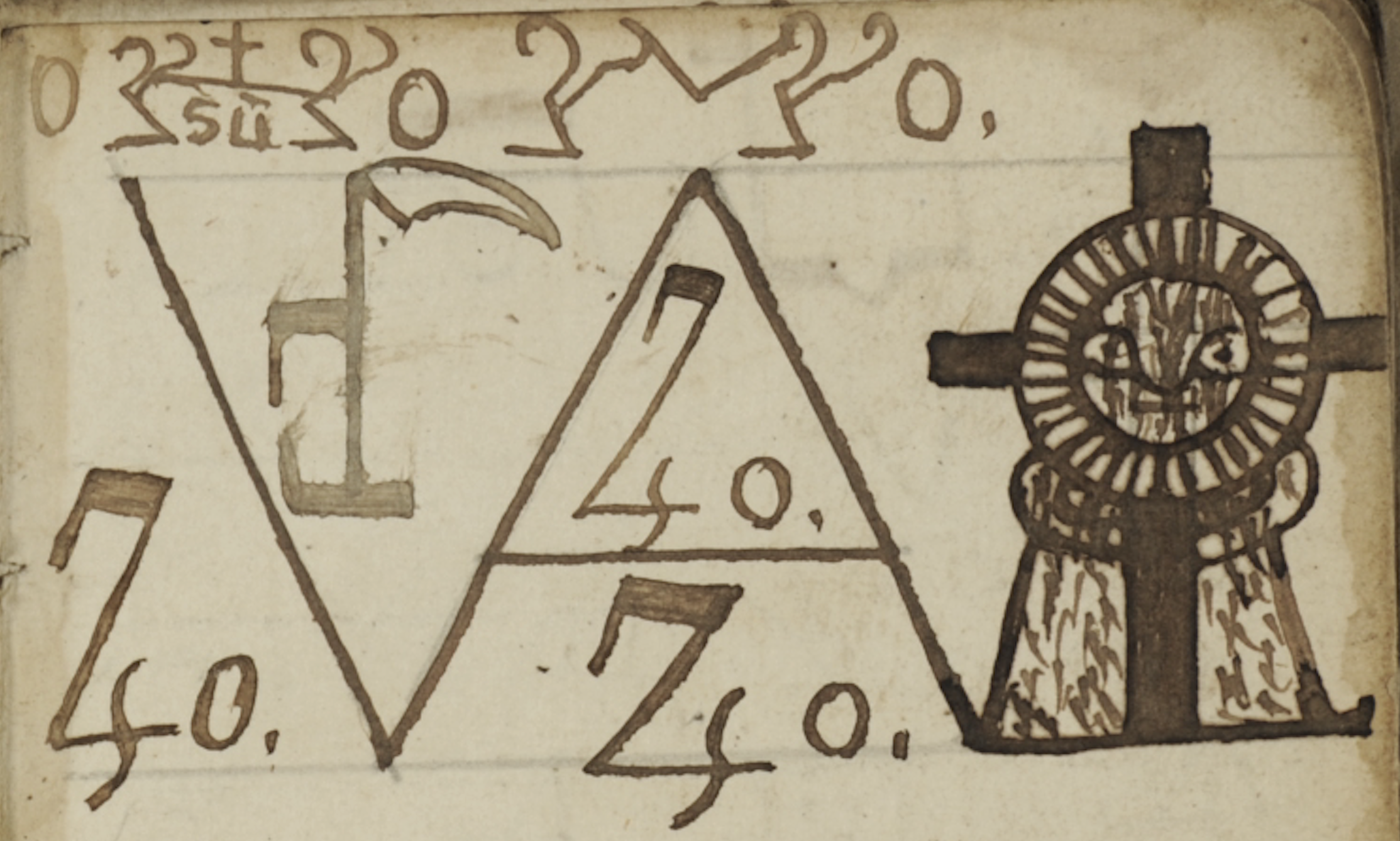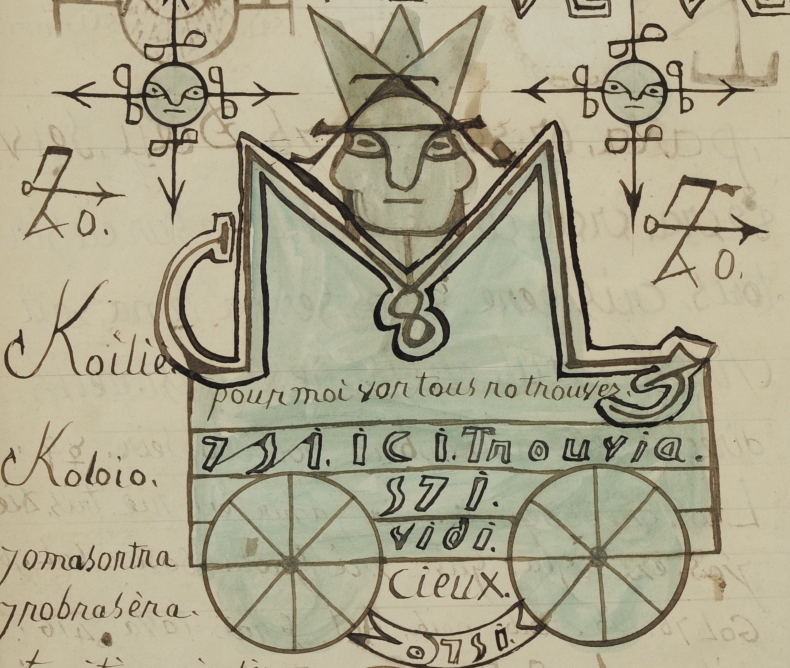Alexander Roob]
[January 5, 2010
The Empty Image as Weapon. Charles Gilbert-Martin´s Anti-Censorship Campaign
Charles Gilbert-Martin, along with André Gill, Alfred Le Petit and Thomas Nast, counted as the main protagonists of the second wave of the caricature movement. What lent them unparalleled popularity in the field of art was less the graphical brilliance and enormous richness of ideas in their works than the back-breaking campaigns and skilful ambages with which they unmasked their powerful political opponents, usually hated censors and corrupt politicians, not seldom forcing them to their knees.
When he founded the caricature periodical Le Don Quichotte in Bordeaux in 1874, Gilbert-Martin had already made a number of bitter experiences with the Parisian censors of the Second Empire – arrests and severe fines. Thanks to his outstanding cover pictures, the periodical soon became one of the most widespread caricature magazines of its time. The Third Republic under the presidency of the monarchically inclined Count de Mac-Mahon offered more than enough targets for the sarcastic crayons of the caricature scene. And old Mac-Mahon, who went down in the annals as the butcher of the Parisian Commune, had a local prefect called Jacques de Tracy turn on Gilbert-Martin, in an attempt to harass the republican Don Quichotte to death by means of continuous persecution and censorship measures. Gilbert-Martin responded to the banning of the July issue No. 159 by declaring that he would no longer publish any caricatures until de Tracy stepped down from office.
>Slideshow: Le Don Quichotte (MePriCollection)
In the 1830s, Charles Philipon had already reacted to bans on caricatures in his magazine, La Caricature, with blank picture pages and typographic abstractions. However, the measure of a picture strike, now taken by Gilbert-Martin to force a censor to his knees, which was immediately made public throughout France, was completely new, and the series of Don Quichotte’s cover pages lacking caricatures in the following four months was unprecedented. Instead of the usual grotesque heads of celebrities, the readers longing for caricatures were now offered a diet of pure colour, dry typography and plain ornament. But the deprivation was more than compensated by their witnessing the exciting fight between Don Quichotte and its censor. Each new issue documented a further exchange of blows in this unequal battle, and the circulation of the periodical steeply increased.
The central theme of the issues having to do with the caricature strike was the empty picture frame, the lacking image (Le Cadre) and the person of the censor himself, who was now blatantly attacked in the texts filling the empty frame. The written polemics could now unfold their power more effectively due to the almost entire lack of pictures. And since this concrete type of illustration was no longer carried out in drawing, the cover pages, pursuant to the provisions of law, didn’t have to be presented to the censors before being printed.
Le Don Quichotte No. 160, 13.07.1877: „Rendez Le Cadre!!!“ (Regive the image!!!)
Le Don Quichotte No. 161, 20.07.1877: Cadre d´Honneur
Le Don Quichotte No. 162, 27.07. 1877: Bouquet de la Saint-Jacques
Le Don Quichotte No. 164, 10.08.1877: Voici le Cadre!!! (Here is the image!!!)
Issue No. 167 from September 1877 spread the news of the decisive hit, which was to become the prefect’s undoing and ultimately led to his final dismantling in the October elections: In one of the packages addressed to his Parisian correspondents, which usually contained copies of Don Quichotte to be sold, Gilbert-Martin, in the presence of a notary, had sent a suppository, a so-called clyster pump, as well as a number of bed sheets supposedly meant for a hospitalised acquaintance. The plan came together. As usual, this package was also confiscated by de Tracy’s office and, as it appears, destroyed without being opened. Gilbert-Martin then accused de Tracy of transgression of authority and illegal intervention in his private affairs, exposing him to public ridicule by saying that he apparently regarded a rectal suppository as a threat to the system of government.
Le Don Quichotte, No. 167, 31. 08.1877: Le Clysopompe subversif
Faecal allusions belonged to the basic defamation strategies of caricature and the clyster to the best-known attributes of the caricature movement. However, the defeat of de Tracy did not mark the end of repression against the caricature periodical. The case caused a great deal of doubt on the side of the authorities in regard to the sense and efficiency of press censorship. Yet it took another four years until the censors’ scissors were put to rest; the visual vocabulary of resistance in political caricature went on to become an arsenal of weapons at the service of “modern” art.
Le Don Quichotte, No. 176, 02.11.1877: Le Trois Coleurs
Le Don Quichotte, No. 177, 09.11.1877: De Profundis !
Le Don Quichotte, No. 179, 23.11.1877: Le Feuille de Vigne
(short version of the German text. Translation: Karl Hoffmann, Berlin)
In MePri-Collection:
primary:
Einzelne zensurrelevante Blätter aus La Caricature, 1832- 35 (hrsg. Charles Philipon)
Sowie umfangreiche Bestände zensierter Karikaturmagazine aus dem Zeitraum 1868 – 77:
La Lune, L Eclipse, La Lune Rousse, Le Grelot und Le Don Quichotte
Die Boss Tweed-Kampagne von Thomas Nast in Ausgaben von Harper´s Weekly, 1868 -71
secondary:
Le Rire. Paris, Jhg. 1901 (including an illustrated history of censorshio and caricature)
Paine, Albert Bigelow: Thomas Nast , his periode and his pictures. New York 1904
Keller, Morton The Art and Politics of Thomas Nast. Oxord 1968
Goldstein, Robert Justin. Censorship of Political Caricature in Nineteenth-Century France, Kent 1989
Rütten, Raimund hrsg.: Die Karikatur zwischen Republik und Zensur. Bildsatire in Frankreich 1830 bis 1880 – eine Sprache des Widerstands? Marburg 1991
Valmy – Bauysse, Jean: André Gill, L Impertinent. Paris 1991
Bezucha, Robert J. ed.: The Art of the July Monarchy: France 1830 to 1848. Columbia / London 1992
Reichardt, Rolf hrg.: Französische Presse und Pressekarikaturen 1789 – 199. Mainz 1992
Summers, Mark Wahlgren: The Press Gang: Newspapers and Politics, 1865-1878. Chapel Hill, 1994
Bosch-Abele, Susanne: La Caricature 1830 -1835 : Opposition mit dem Zeichenstift. Gelsenkirchen 2000
Kerr, David S.: Caricature and French Political Culture 1830-1848 (Charles Philipon and the Illustrated Press). Oxford 2000
Adler, John / Hill, Draper: Doomed by Cartoon. How Cartoonist Thomas Nast and the New York Times Brought Down Boss Tweed and His Ring of Thieves. New York 2008

